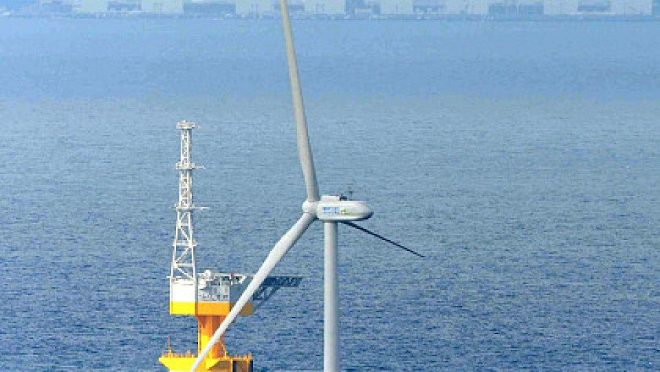As momentum builds in Japan’s offshore wind energy sector, government leaders, industry figures, and civil society groups came together for a roundtable on accelerating sector progress, jointly convened by the Global Wind Energy Council (GWEC) and Ocean Energy Pathway (OEP).
This roundtable featured 65 participants from government, representing the Ministry of Economy, Trade, and Industry (METI), Ministry of Land, Infrastructure, Transport, and Tourism (MLIT), and the Ministry of Environment (MoE), foreign embassies, the finance sector, think tanks, and local and international industry players. The discussion focussed on how new legislation that would allow development of offshore wind in the Exclusive Economic Zone (EEZ) could be effectively implemented to accelerate the deployment of Japan’s offshore wind, particularly floating offshore wind farms. Industry participants achieved consensus on the need for a specific target for floating offshore wind, and all participants including from government ministries agreed on the need for a collaborative approach to the sustainable development of offshore wind moving forward.
To deliver Japan’s ambitious targets of 10GW of offshore wind by 2030 and 30-45 GW by 2040 , new strategies are needed to accelerate the sustainable development of the sector. As Ocean Energy Pathway’s launch event in Japan, this roundtable sets the stage for programmes aimed at accelerating the growth of offshore wind as a driver of industrial growth and economic revitalisation of coastal communities, including in the wider blue economy. This shared discussion was led by Mr. Akihiko Kurashina, OEP Country Head, who brings a background from industry and civil society.
Ocean Energy Pathway brings together diverse stakeholders and delivers expert, independent technical assistance and hands-on-support to governments and stakeholders to help accelerate the growth of offshore wind energy. OEP is a philanthropically-funded global not-for-profit organisation that has this year launched operations in Japan, South Korea, India, and Brazil.
This event was also the Japan launch of GWEC’s 2024 Global Offshore Wind Report, which highlights Japan as one of a ‘new wave’ of offshore wind countries that will lead the way for offshore wind development in the Asia Pacific (APAC). GWEC forecasts that 410 GW of new offshore wind capacity will be installed in the next ten years, bringing offshore wind deployment in line with global targets to install 380 GW by 2030. This anticipated growth will be driven by markets like Australia, Japan, South Korea, the Philippines, Vietnam, Brazil, Colombia, Ireland, and Poland – where policy developments and unprecedented focus across governments, industry and civil society is setting the conditions for long-term offshore wind development at scale.
“I was pleased to convene this gathering, bringing together diverse stakeholders to identify opportunities for growth, challenges and find pragmatic approaches unique to Japan by best practices and knowledge. Through our collaboration with wide stakeholders, including civil society organisations, public, private, and academic sectors, we look forward to building a shared, tangible ambition for the acceleration of offshore wind in Japan.” Akihiko Kurashina, OEP Country Head and Senior Advisor to GWEC.
“Japan has a huge potential for offshore wind, and can realise an important industrial opportunity when it comes to the development of floating wind. Our Global Offshore Wind Report 2024 shows huge global momentum for offshore wind, and we see Japan as an integral part of that growth story. I am pleased to see the positive dialogue here today about how the wind industry can work collaboratively with government and other stakeholders to realise offshore wind’s role within the carbon neutrality and industrial vision.” Rebecca Williams, Chief Strategy Officer – Offshore Wind, GWEC


